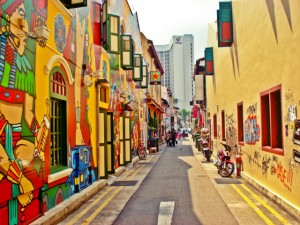
To build great cities of the future, authorities should radically rethink their urban planning approach by prioritising pedestrians first, instead of focusing on vehicles, according to Gabe Klein, Special Venture Partner at Fontinalis Partners and Chicago’s former Commissioner of Transportation.
“It shouldn’t be a given that cars should be the dominant force on the streets,” he said during a lecture in Singapore held on 9 April jointly organised by the Urban Land Institute (ULI) and Centre of Liveable Cities.
To create more liveable cities, he argued that the government should place the greatest importance on pedestrians, followed by public transportation and cycling.
Cars should be at the bottom of the hierarchy because it can cause accidents and worsen air quality. Aside from promoting an unhealthy lifestyle, it also has a negative impact on property values, Klein explained.
Thus, he advocates a return to the past, when cities were once intuitively designed around people, rather than automobiles. Metropolises then were filled with vibrant public spaces for a multimodal society, where “people walked, biked and took public transit” to get around, he recalled.
For instance, Singapore’s Bugis Street in the 1960s, as well as Arab Street and Haji Lane were designed more than a hundred years ago with people and activities in mind, instead of cars, he noted.
It was only after the development of suburbs alongside the growing popularity of vehicles, especially in the United States, that cities became a place to work or pass through, rather than to live in.
However, he advises emerging cities not to follow this example.
“We’ve made a tremendous amount of mistakes in the Western world, and a lot of other countries have copied our mistakes, including China. The price they face now is pollution and congestion.”
Therefore, Klein urges governments lessen the usage of cars. One way is to change the people’s mindset that vehicles are regarded as status symbols.
Aside from building more public transportation infrastructure, authorities may also adopt a holistic end-to-end approach, such as providing public showers and other hygiene amenities for bikers to encourage this mode of transportation.
In Singapore, dependence on cars has noticeably increased by decentralising offices, enhancing its public bus and rail systems, as well as researching car-sharing schemes and the feasibility of driverless pods. It also discouraged vehicle ownership by imposing high costs and taxes.
Image: Haji Lane in Singapore.